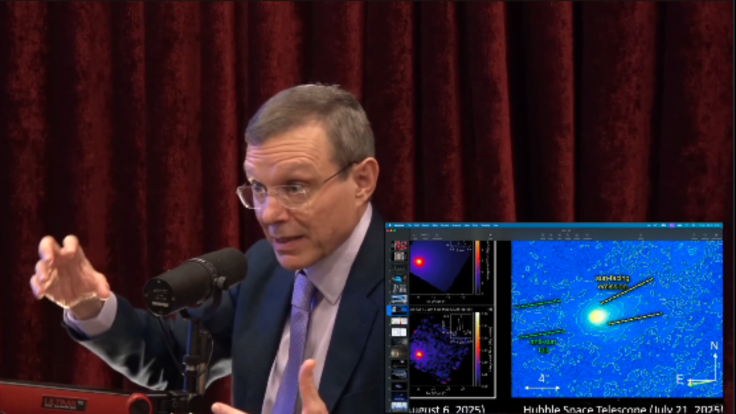Why 3I/ATLAS Images Are Dropping Right Now? Avi Loeb Claims Timing Feels Way Too Strange
NASA breaks its silence on interstellar object 3I/ATLAS this November 19.

The cosmos is usually a place of silence, yet the noise surrounding the latest interstellar visitor has become deafening. After a period of frustrating opacity and halted data, the silence is finally breaking in mid-to-late November.
The anticipation has reached a fever pitch as NASA prepares for a special live event, promising to unveil high-resolution imagery of the enigmatic object that has drifted into our solar system from a distant, unknown star. While official channels frame this as a standard update following administrative delays, the timing has sparked intense debate among those who watch the skies.

The Sudden Resurgence of 3I/ATLAS Data
For weeks, the scientific community and enthusiasts alike were left in the dark. The stream of information regarding this interstellar traveller ceased abruptly, leading to rampant speculation.
We now understand that the release of these critical high-resolution images was stalled, primarily because data from NASA's Mars Reconnaissance Orbiter (MRO) was delayed due to a U.S. government shutdown that pushed the availability of this data to mid-to-late November, long after the initial capture.
These images are vital; they were captured in early October 2025 as the object swept past Mars, offering a vantage point impossible to achieve from Earth.
The frustration stems from a critical gap in observation. The object made its closest approach to the Sun, known as perihelion, around October 29. During this window, the visitor was largely obscured from Earth's view by the glare of our own star.
Consequently, the data sitting in the backlog of the MRO's HiRISE camera became the holy grail for researchers.
It holds the only high-resolution details of the object's composition and behaviour during its most active phase. Now, unexpectedly, NASA has dropped this announcement right before the object reaches a critical point in its journey, leaving many to wonder if the data dump is merely bureaucratic catch-up or something more calculated.

Avi Loeb and the Anomalies of 3I/ATLAS
The delay has not gone unnoticed by prominent figures in the field. Harvard astrophysicist Avi Loeb has been particularly vocal, noting that for weeks, these specific images were said to be 'under processing'.
Loeb suggests that the timing feels strange, hinting that the hiatus in information release might be more than simple red tape.
He argues that the absence of transparency raises valid suspicions, especially when dealing with an object that refuses to behave like a standard comet.
Loeb has repeatedly highlighted several 'anomalous' behaviours of 3I/ATLAS that challenge the natural comet hypothesis. Among these oddities are the presence of an anti-tail and specific jet structures that defy typical cometary formation.
Furthermore, he points to a chemically unusual nickel-to-cyanide ratio and instances of non-gravitational acceleration—movement that cannot be explained solely by the pull of the Sun or planets.
These factors lead Loeb to argue that the object could point to an 'artificial, technological origin rather than a natural comet'. For him, the need for data is not just academic; it is urgent.
He emphasises that sharing scientific data should be prioritised because it is time-sensitive for planning further observations of the object as it leaves the solar system and minimising the data gap during this crucial departure phase.
The delay created a blind spot during a period of peak activity, feeding speculation that the official narrative may be lagging behind the reality of what 3I/ATLAS actually is.
🚨 NASA Breaks Its Silence… But Why Now? 🚨
— Astronomy Vibes (@AstronomyVibes) November 18, 2025
NASA has announced a special live event to finally reveal the latest high-resolution images of interstellar object 3I/ATLAS — the mysterious visitor drifting into our solar system from another star.
But here’s the twist… 👀
For… pic.twitter.com/aEXIzWBiui
The November 19 Reveal of 3I/ATLAS
While most mainstream scientists maintain that 3I/ATLAS is likely natural—arguing that its strange properties result from its different origin and history in interstellar space rather than alien engineering, and that it is still behaving like a natural comet despite its eccentricities—the upcoming reveal is set to settle the score.
On Nov. 19, NASA says they'll show what they've been quietly observing all this time. The event, accessible via the NASA website and their YouTube channel, promises to shed light on the mysteries that have deepened with every passing week.
The question remains: Why collect images from multiple NASA missions and release them all at once? Sources indicate that the timing feels way too strange for many space followers.
Every time an interstellar object appears, the mystery deepens—and this one is already showing odd behaviour in its brightness and movement.'
Whether these new images will provide a mundane explanation or validate the bold theories of an artificial origin remains to be seen. Will these new images answer our questions—or raise even more?
As the clock ticks down to the November 19 livestream, the scientific community remains divided between mundane natural explanations and the thrilling possibility of technological origin.
Whether 3I/ATLAS is a dusty traveller from a distant star or something far more profound, one thing is certain: the silence is ending.
© Copyright IBTimes 2025. All rights reserved.



















